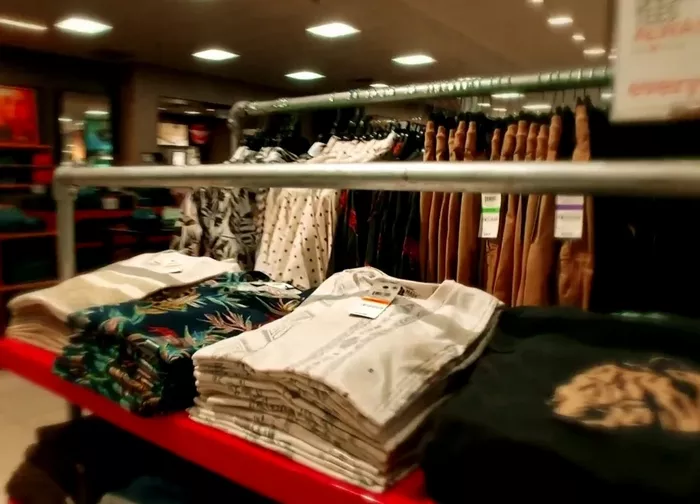It’s not your imagination—well-made clothing is becoming increasingly harder to find. The U.S. fashion industry is struggling to maintain quality standards due to intense competition from overseas and disruptions in the supply chain.
According to a recent survey from product auditing firm QIMA, 27% of textile and apparel professionals reported that ensuring consistent quality was “difficult” or “very difficult” in the past year, an increase from 23% in 2024.
Margaret Bishop, a textile development and marketing professor at the Fashion Institute of Technology in New York, explained, “There has been a significant reduction in the quality of fabric used by major brands and retailers,” noting that this decline worsened during the recovery from the pandemic. During this time, apparel manufacturers had to navigate supply chain disruptions and cope with weak sales during global lockdowns.
The drop in quality can be attributed in part to cost-cutting measures, as the fashion industry bets on consumers’ willingness to accept lower-quality garments in exchange for lower prices. Since 2019, consumer prices overall have risen by 26%, with food up 30% and cars up 25%, while apparel prices have only risen by 6%.
Clothing retailers understand that if they raise prices, they risk losing customers. As Sheng Lu, a professor of fashion and apparel studies at the University of Delaware, pointed out, “They know if they raise the price, they lose consumers.”
While clothing and shoes are necessary, households often view these items as discretionary, at least compared to essential purchases like gas and groceries. In the past year, consumers have become laser-focused on finding the best deals, hunting for discounts wherever possible.
Americans often turn to overseas sellers, including China-based e-commerce giants like Shein and Temu, for the best prices. These ultracheap foreign retailers have put pressure on domestic brands, prompting a crackdown from the Biden administration. The Trump-era China tariffs could further affect these companies.
China remains the largest exporter of apparel to the United States. However, factory inspections by QIMA revealed that the failure rate for textile and apparel products in China rose to 13.7% last year, up from 12.7% in 2023. As apparel brands move production out of China to reduce labor costs and minimize exposure to tariffs, they are increasingly turning to countries with even higher failure rates, such as India (21.2%), Cambodia (16.6%), and Indonesia (14.2%).
Joseph Ng, CEO of Shift Fashion Group, a consultancy that works with manufacturers, explained, “Factories in emerging markets often don’t have decades of experience. It takes time to build a skilled workforce.” This challenge is compounded when workers are pressured to prioritize quantity over quality, Ng added.
Despite these challenges, QIMA reports that global quality levels have remained relatively stable in recent years, and failure rates in some key manufacturing countries actually improved last year.
Nevertheless, Bishop noted that the industry is experiencing a “race to the bottom” as labor and raw material costs rise quickly.
Demand for affordable apparel from both domestic and foreign fast-fashion brands has surged. From 2020 to 2024, the top three global fast-fashion retailers—Shein (China), Zara (Spain), and H&M (Sweden)—nearly tripled their U.S. market share, according to Euromonitor data. Meanwhile, many domestic fashion brands have struggled to compete, resorting to promotions and cost-cutting measures to maintain sales and offset profit margin losses.
Fabric makes up 60% of the cost of a garment, with labor typically accounting for around 30%, and trim (zippers, buttons, etc.) making up the rest. As a result, retailers often downgrade fabric quality when looking to save money.
Quality can vary significantly within a brand’s clothing line, depending on the region where each item is produced. Ng explained that large retailers often use buying houses that produce garments in different regions, leading to a mix of high-quality and subpar products.
Julia Hughes, president of the U.S. Fashion Industry Association, acknowledged reports of quality concerns but emphasized that “well-known brands and retailers” continue to maintain the same or better quality standards.
For shoppers seeking value, identifying well-made clothing can be a frustrating task. Bishop recommends carefully inspecting each garment in person, paying attention to stitching and fabric quality. Heavier fabrics tend to be more durable than lightweight ones, and checking for small holes or uneven yarn tension can help identify flaws. Stitches should be tight, with ideally eight stitches per inch, and buttons should be securely sewn. Fabrics that lose their shape when stretched should be avoided.
“There’s a myth that if something is made from synthetic materials, it’s bad or cheap,” Bishop said. In fact, materials like nylon are very durable, and polyester is excellent for wicking sweat.
Ng added that it’s about using the right materials for the right purpose. For example, cotton leggings aren’t ideal for athletic wear.
He also cautioned that higher prices don’t always equate to better craftsmanship. “The biggest misconception in fashion is that luxury goods automatically mean better quality,” he said. However, he noted that there is a growing consumer movement toward higher-quality clothing.
Market research from Euromonitor indicates that consumers are increasingly valuing durability, repairability, and overall quality, a trend that aligns with the growing interest in secondhand clothing.
As more shoppers are put off by poorly made, low-cost garments, brands have an opportunity to differentiate themselves through quality and service. This, in turn, can justify higher prices and fewer promotions, according to Marguerite LeRolland, an apparel and footwear industry manager at Euromonitor.
Related Topics
- Disney and Lucky Brand Unveil a Vintage-Inspired Limited-Edition Collection
- Minnesota-Based UNRL CEO Reflects on Journey Ahead of Super Bowl Ad Spot
- Justin Bieber’s Mysterious Clothing Brand SKYLRK: A First Look at the Emerging Label

